Introducing Cathedral of Mary’s Assumption In Koper
The Cathedral of the Assumption of the Blessed Virgin Mary, also called simply Koper Cathedral, is a Catholic cathedral located in Koper, Slovenia’s largest coastal city. It was built in the 12th century in Romanesque style, with three naves, each ending with an apse. Until the end of the 14th century the building underwent changes and additions, which also led to a change of style: the western facade is clearly Gothic. After a severe earthquake in 1460, the facade was redesigned in 1488, with the addition of Renaissance elements. The entire interior of the Cathedral was redecorated by the famous Italian architect Giorgio Massari in the 18th century.
Cathedral of Mary’s Assumption Review
Koper’s cathedral is located right in the historic city centre on the main Tito square and dates back to the second half of the 12th century when Koper acquired its own diocese. The entrance and exterior of the cathedral is a unique amalgam of Gothic lower storey and Lombardy-style upper storey, rather drab and in need of a sensitive restoration. But the interior is brighter and impeccably decorated with fine artwork, a combination of late Gothic vaulting given a neoclassical makeover in the 18th century, the same era as the stately Baroque side altars that line the sides of the nave. The main altar is more richly ornamented, with a large gold-plate-encrusted bishop’s throne dating from 1730 that was refurbished for a visit by the late Pope John Paul II. Inside the Cathedral there are numerous treasures you don’t want to miss, including the ornate medieval sarcophagus of local protector St. Nazarius behind the main altar, the large altarpiece ‘Madonna with Child on the Throne of Saints’ by the Venetian painter Vittore Carpaccio from 1516, who is believed to have lived in Koper for a time, and two additional paintings by Carpaccio, ‘The Presentation in the Temple’ and ‘The Slaughter of the Innocents’. The one oddity is the modern glass automatic sliding door located towards the rear of the cathedral which leads out into a courtyard area. It seems to us to be out of place and not in sympathy with the rest of this lovely cathedral.
Pressed into the cathedral’s south side is the Bell Tower. Originally part of a Roman fortification, the tower was transformed into its present appearance between the 15th and 17th centuries, and has been used for liturgical purposes ever since. Panoramic views of of the town, coast and hinterland can be had by ascending 204 steps to reach the viewing platform at 43 meters.
Bottom line, well worth a visit if you happen to be in Koper’s old town! The cathedral is open every day of the year from 7:00 to 12:00 and from 15:00 and 19:00. The entry is free of charge. The cathedral is also accessible for wheelchairs through the large main entrance from the square.
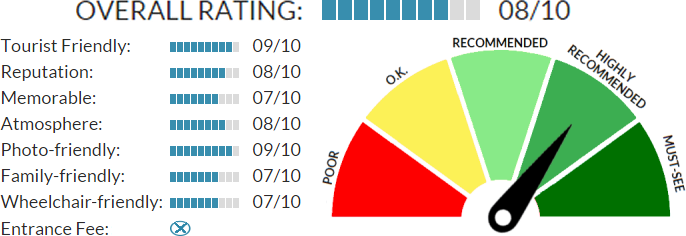
Cathedral of Mary’s Assumption Pictures
View our image gallery with high-resolution photos that prove you have to visit the Cathedral of St. Mary’s Assumption in Koper!
Three photos below courtesy of I Feel Slovenia
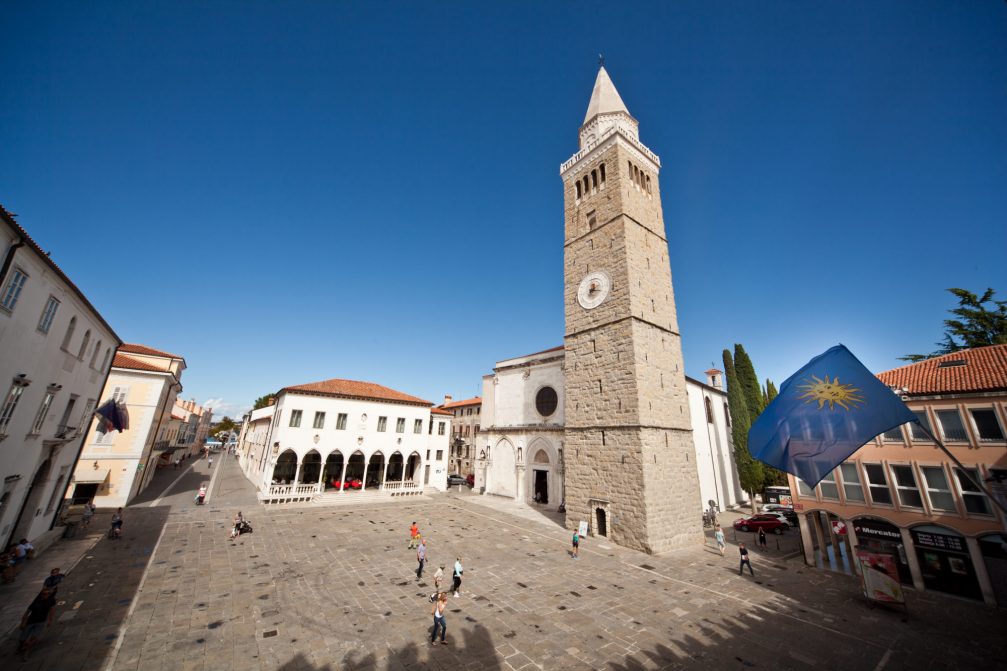
The cathedral is located on the main Tito square right in Koper’s Old Town. (Image by Jost Gantar)
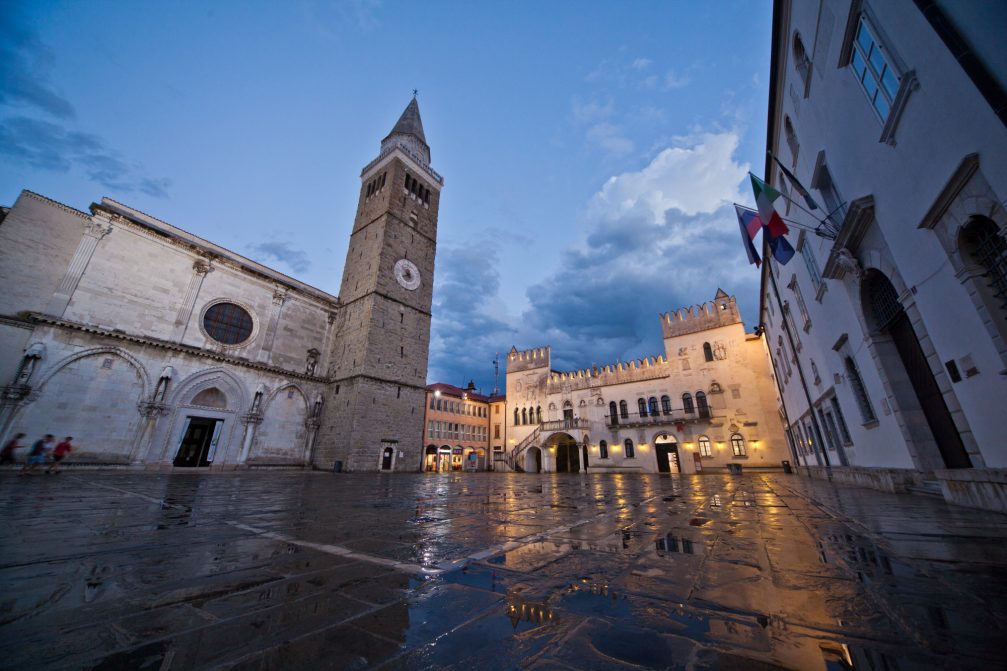
The cathedral’s exterior is a unique amalgam of Gothic lower storey and Lombardy-style upper storey, the latter part completed a century later than the lower part. (Image by Jost Gantar)
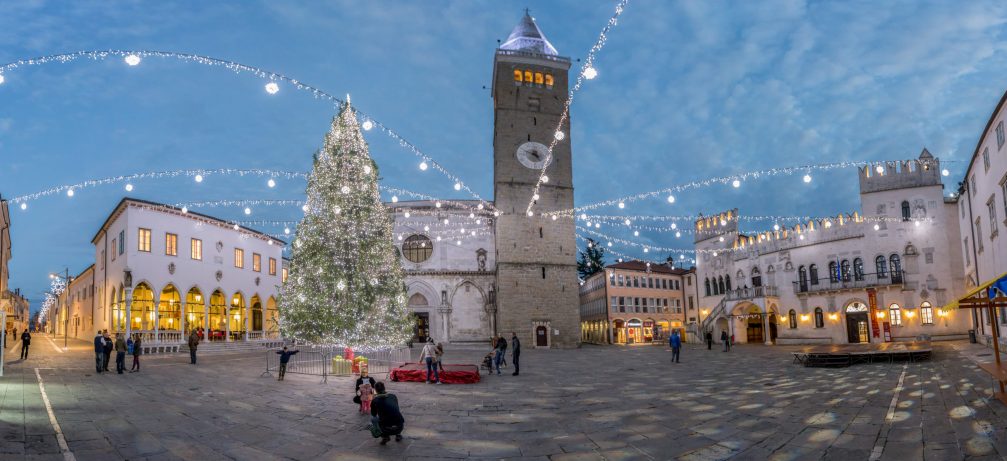
Christmas decorations at Tito Square during the festive season in December are a must see. (Image by Jaka Ivancic)
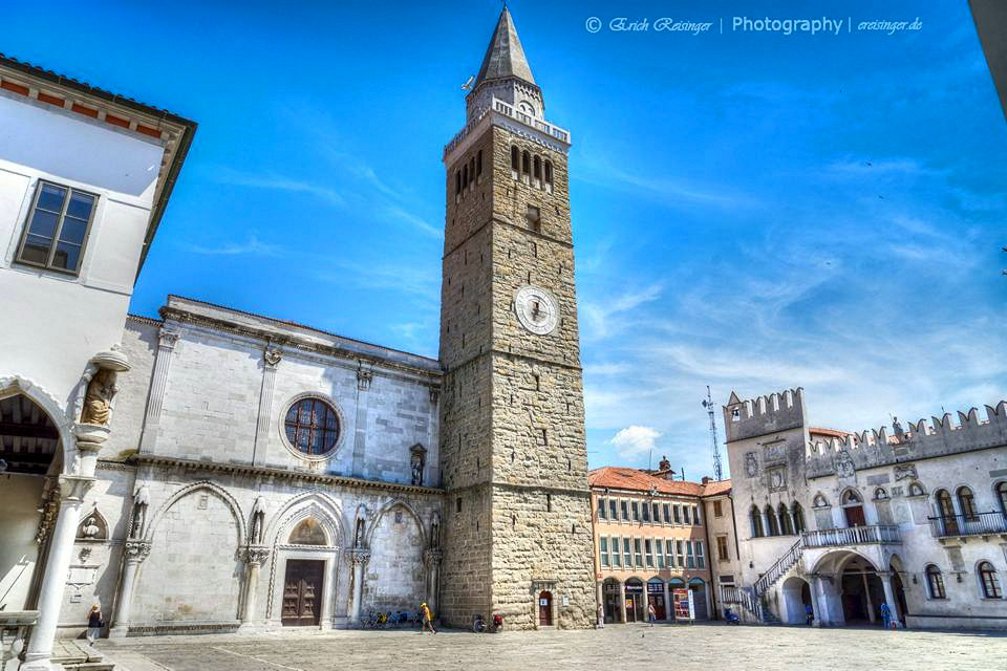
Tito Square is dominated by the bell tower of the St Mary’s of the Assumption Cathedral. (Image by Erich Reisinger)
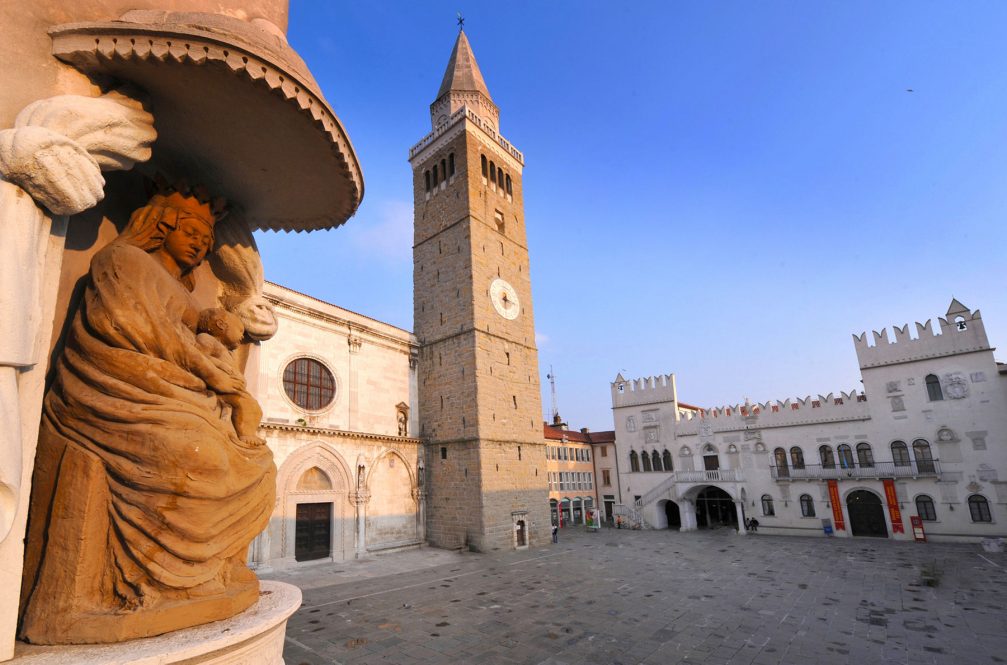
The bell tower is from the 13th century and was a watch tower before the cathedral incorporated it as part of the building. Image by TICKoper / CC BY-SA 4.0
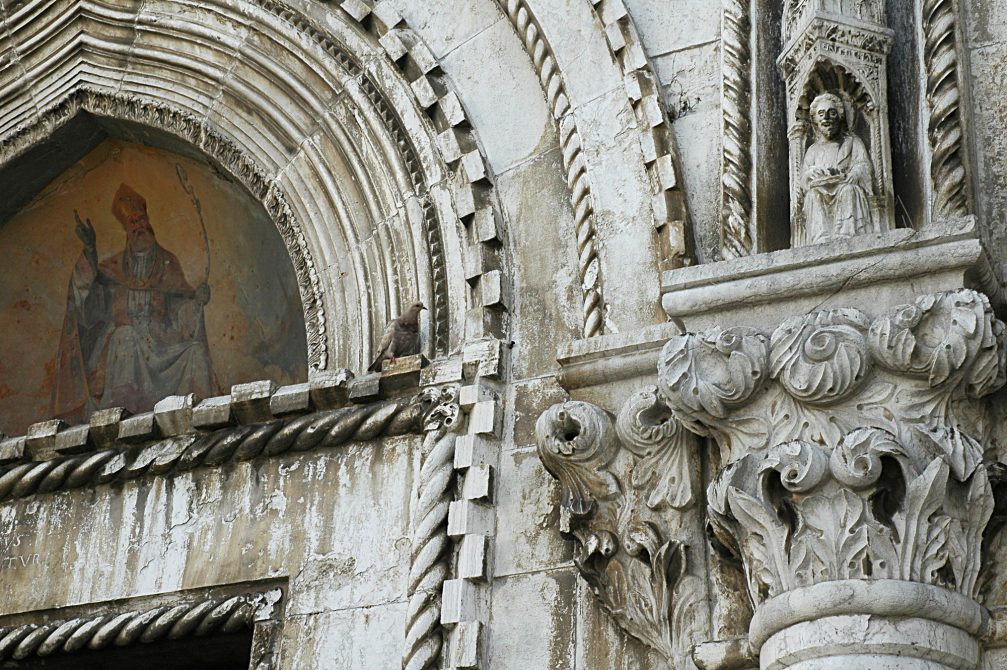
A lunette and a capital. Image by Jpatokal / CC BY-SA 4.0
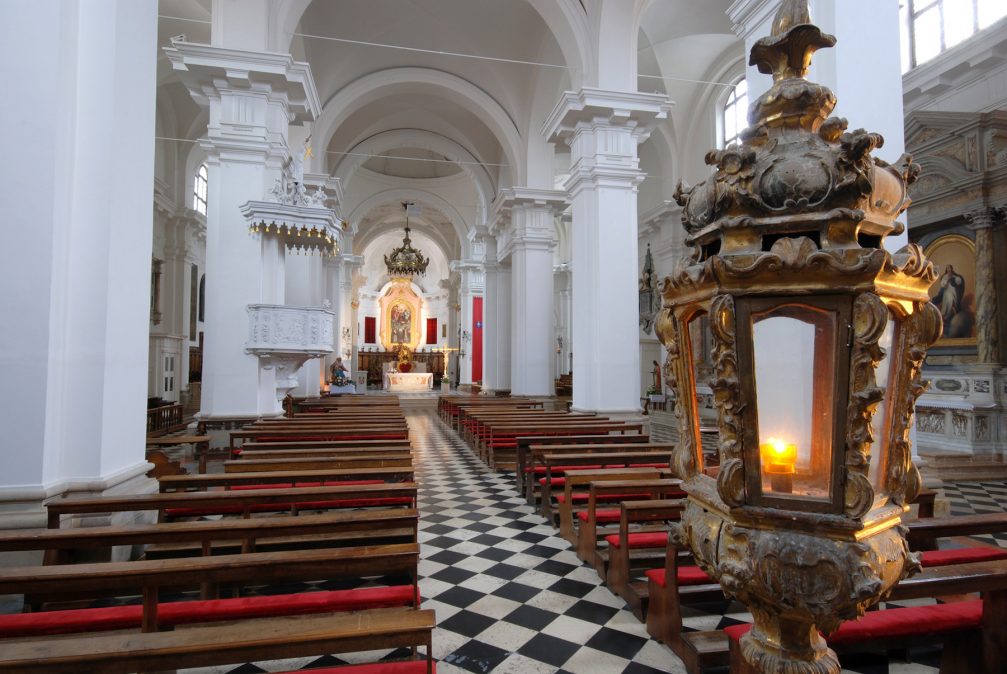
The interior of the cathedral is impeccably decorated with fine artwork, statures, windows, fixtures and fittings. For a cathedral it is not very large but feels bright with white walls, gilt and an ornate alter and pulpit. Image by TICKoper / CC BY-SA 4.0
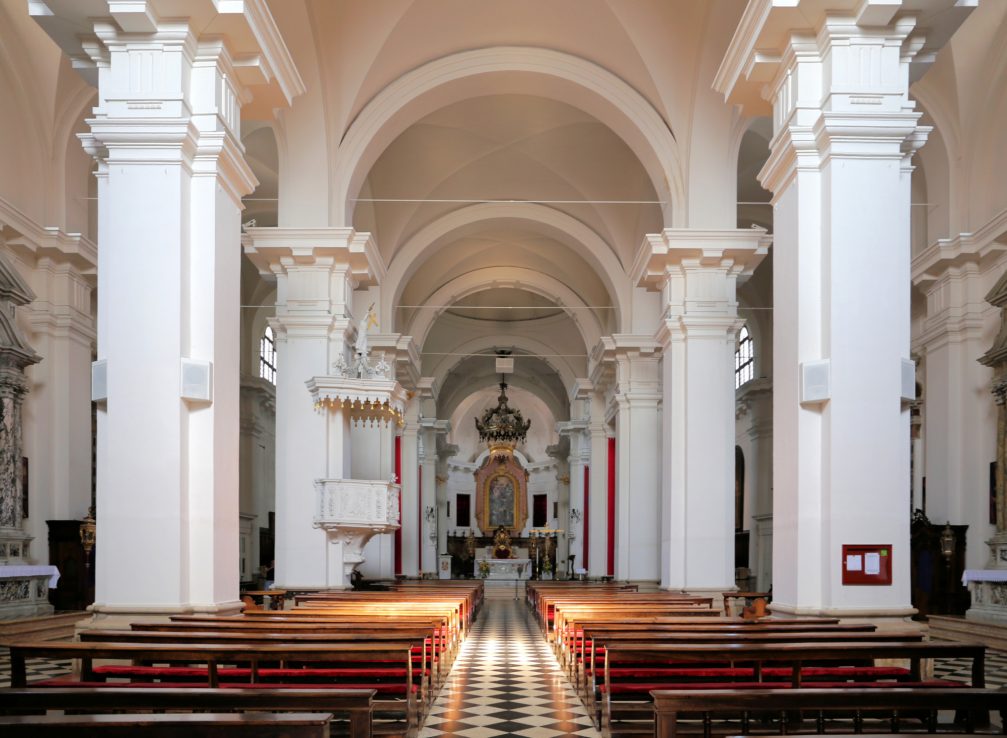
The interior is beautifully maintained, fresh, vibrant, so tastefully adorned and decorated – warm, inviting, reverent – and somehow, it almost feels modern (as if it was recently built, which, obviously, it was not). Image by Sailko / CC BY 3.0
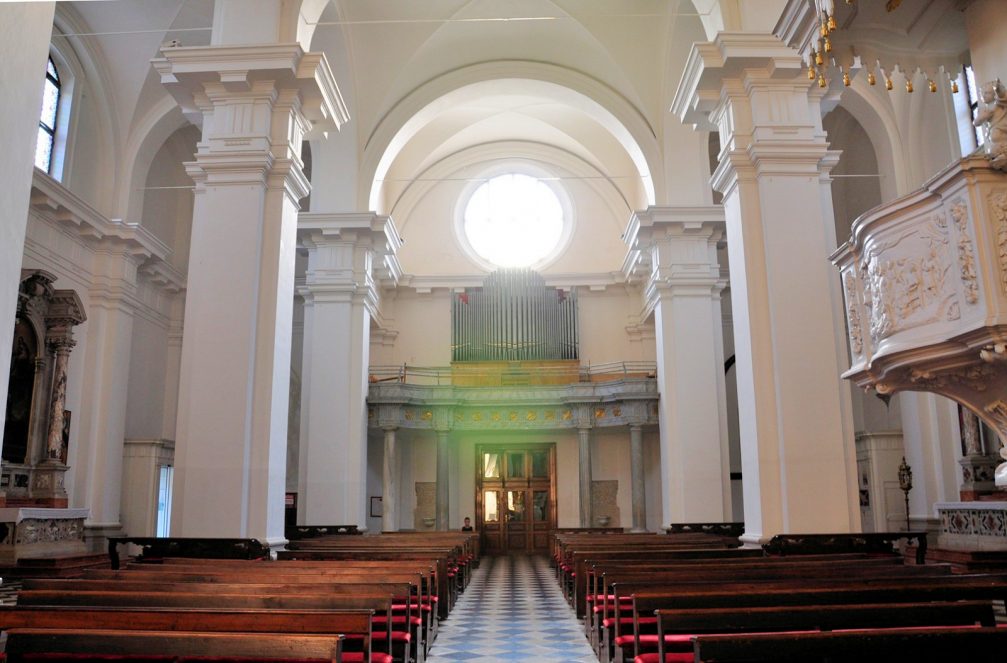
The organ is from 1773, designed by the Venetian organ builder Gaetano Callido. Image by Janos Korom Dr. / CC BY-SA 2.0
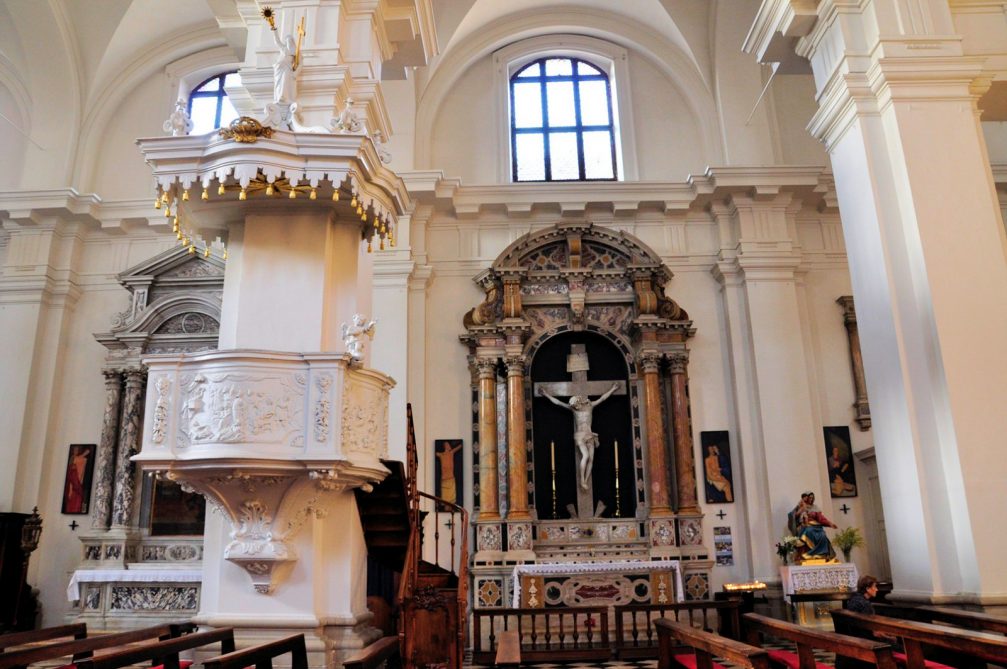
The Baroque style pulpit from 1758 is an amazing sight to see. Image by Janos Korom Dr. / CC BY-SA 2.0
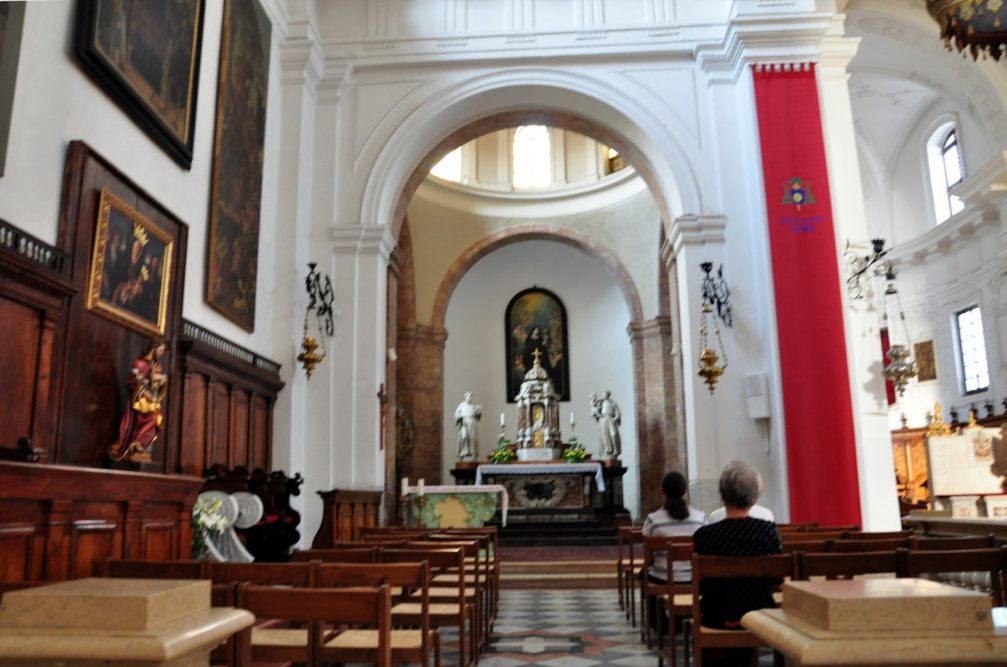
A side chapel with an altar and tabernacle. Image by Janos Korom Dr. / CC BY-SA 2.0
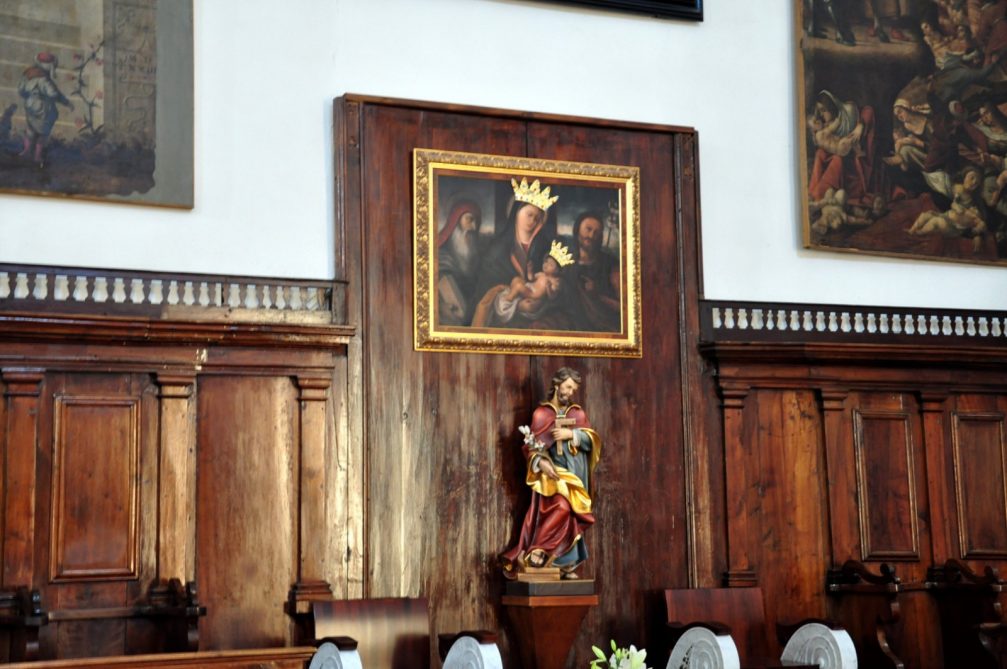
A painting by Benedetto Carpaccio. Image by Janos Korom Dr. / CC BY-SA 2.0
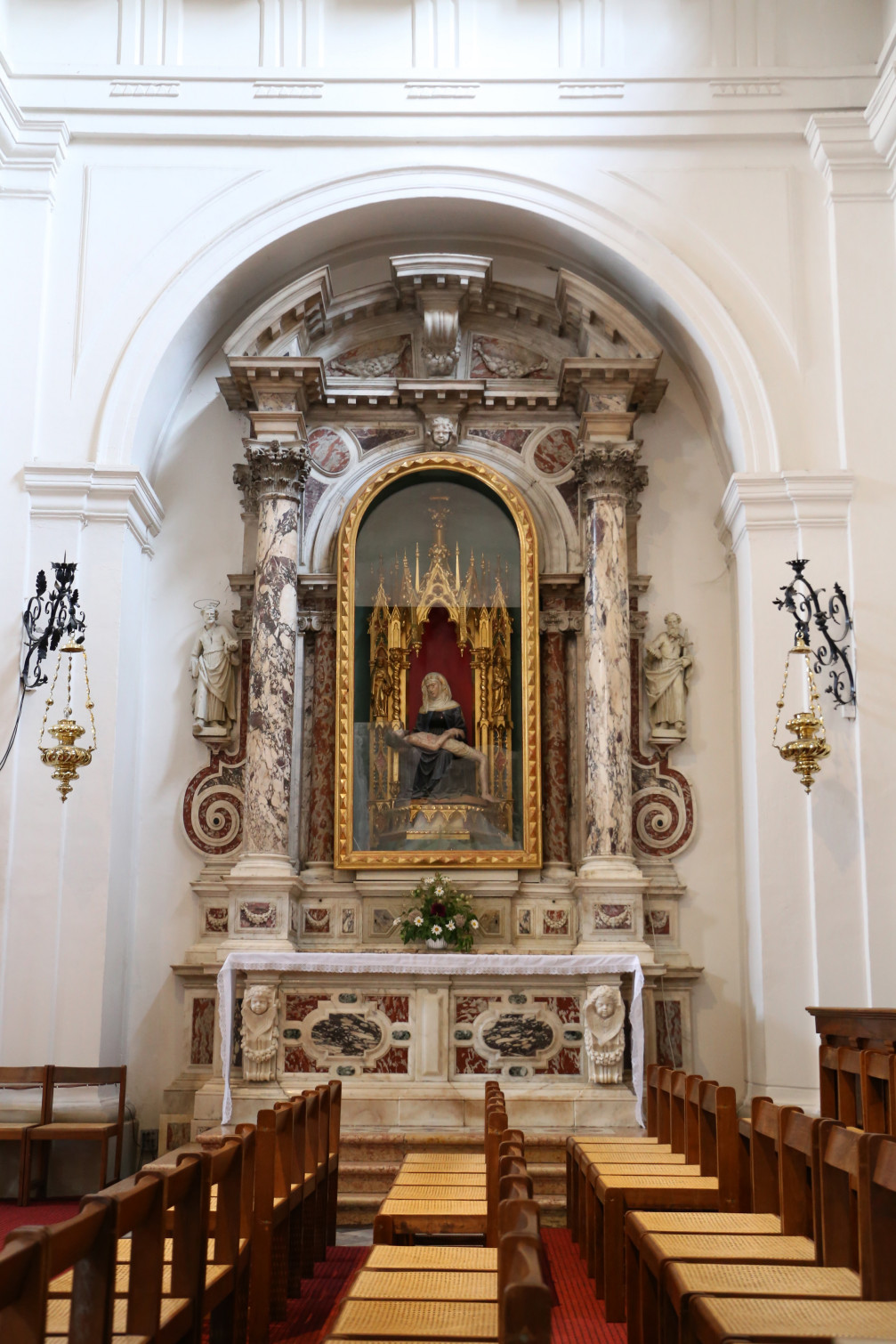
A pieta from the 15th century. Image by Sailko / CC BY 3.0
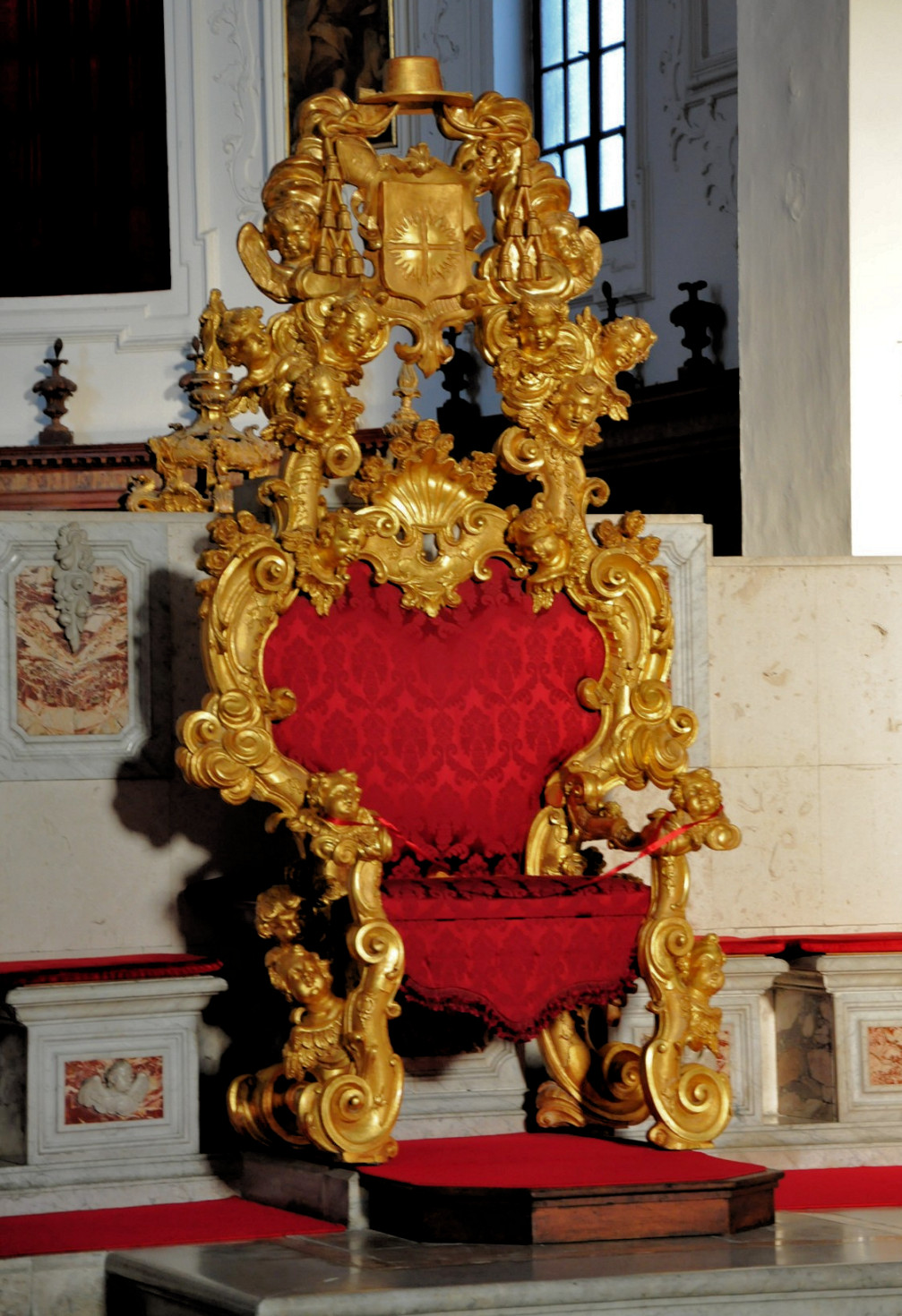
The gold-plate-encrusted bishop’s throne, dating from 1730. Image by Janos Korom Dr. / CC BY-SA 2.0
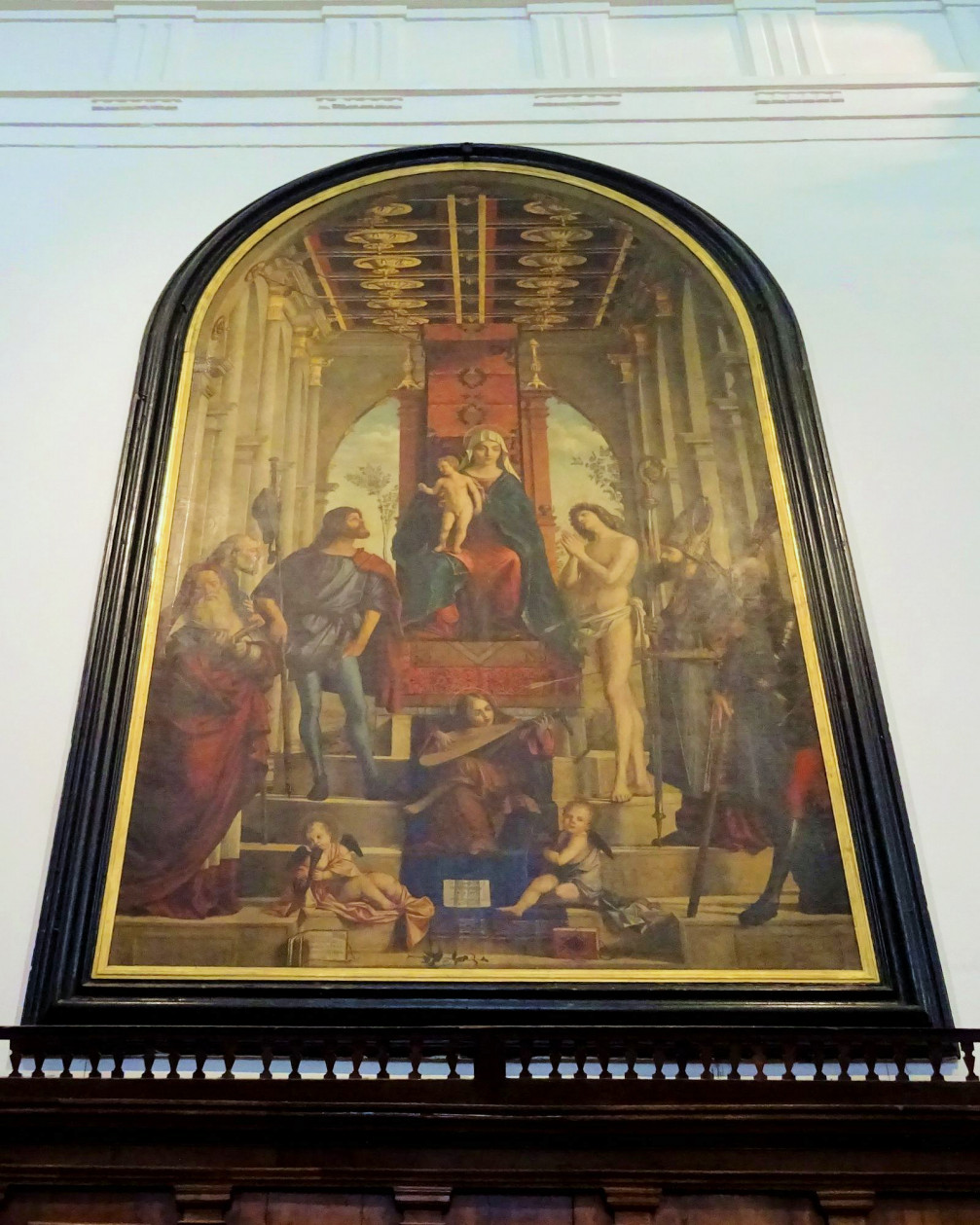
On the right side of the transept is an animated Madonna with Child on the Throne and Saints attributed to the Venetian painter Carpaccio, who is believed to have lived in Koper for a time. Image by Aggrucar / CC BY-SA 4.0
Cathedral of Mary’s Assumption in Koper on the map
Address: Titov Trg 1, 6000 Koper, Slovenia
Latitude and Longitude Coordinates: 45.548450, 13.729690
GPS coordinates: 45° 32′ 54.42” N 13° 43′ 46.884” E
Region: Littoral
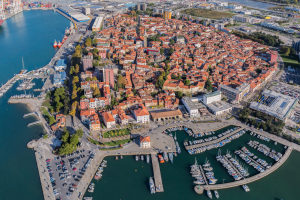 Koper or Capodistria as it is called in Italian shows two faces to the world: one is a modern, loud and busy industrial part of the city with the only commercial port in Slovenia. The other is the charming small Old Town with the lovely square of Titov Trg and late medieval and early Renaissance buildings, such as the Praetorian Palace, the Loggia Palace and the Cathedral of the Assumption built in Venetian styles. |
| |
|---|
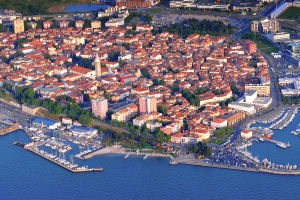 Overall Rating: The main attraction in the seaside town of Koper is its well-preserved medieval city center called the Old Town. Five centuries of Venetian rule are almost impossible to ignore here, especially while strolling along the narrow streets past impressive old buildings and former palaces. |
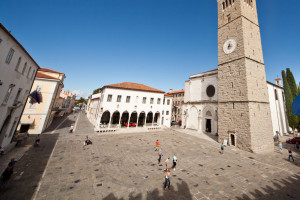  Overall Rating: This quite sizeable town square is the first place you should head when exploring Koper. It dates back to the Venetian era and is home to several of the town's main attractions. |
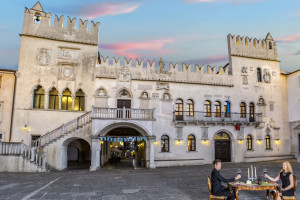  Overall Rating: For any visitor to Koper, the Praetorian Palace is a must see. It is located in the centre of the town on the main Tito Square and absolutely dominates the place. |
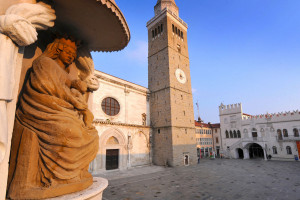  Overall Rating: Koper's cathedral is located right in the historic city centre on the main Tito square and dates back to the second half of the 12th century when Koper acquired its own diocese. |
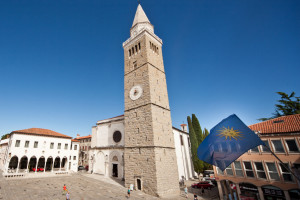  Overall Rating: Set on the eastern side of the Tito square in the centre of old Koper is the 54-metre-high Bell Tower. If the weather is good, amazing panoramic views of the entire Koper area and beyond can be had by climbing 204 steps to reach the viewing platform at 43 meters. |
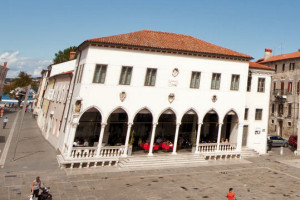  Overall Rating: With its impressive Gothic-style lancet arches, the 15th-century Loggia building stands on the northern side of the historic Tito Square in the heart of old Koper. Its ground-floor arcade is now a café. A side door leads to the first-floor Loza gallery. |
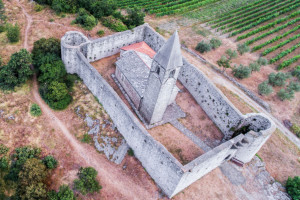  Overall Rating: The rustic village of Hrastovlje, located in the hills above the coast, only a short 20-minute drive from Slovenia's largest coastal town Koper, is home to one of the country's most outstanding medieval treasures, the Church of the Holy Trinity. The church building itself is quite impressive, looking like a small, ancient fort, but what attracts most visitors to this little church is the famous Dance of Death fresco on the south wall. |
| |
|---|
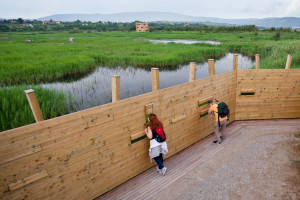  Overall Rating: Skocjanski Zatok Nature Reserve is an oasis of unspoiled nature on the outskirts of Koper, Slovenia's largest coastal town. It is one of the most beautiful protected areas in the country and permanent or temporary home to several hundred animal species, including 300 species of butterflies, 300 species of beetles, 38 species of dragonflies, amphibians, reptiles, and almost 250 species of birds which can be observed from newly built bird hides and an observation tower. |
| The accommodation options in Koper can be divided into six main categories: hotels, guesthouses, B&Bs, apartments, farm stays and hostels. |
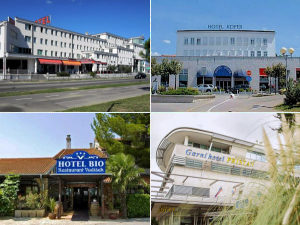  Koper is the largest town on the Slovenian coast and the sixth-largest city in Slovenia. There are currently 5 hotels in the city, but the overall quality of the hotels is not that great, and at the moment there's only one hotel in Koper that we can really recommend. Find out which one and why! |
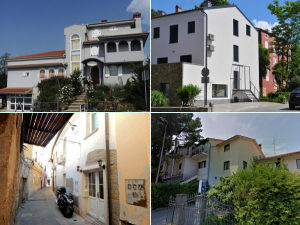  Guest houses are a traditional form of accommodation in Slovenia for holiday makers and other travellers. They are a great choice for a place to stay as they are comfortable and wallet-friendly with owners who take an interest in their guests. There are more than 10 guest houses available in the Koper area, find out which are the ones that we recommend the most. |
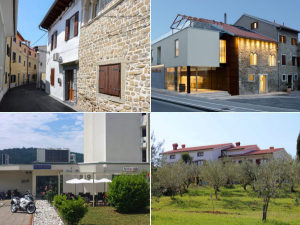  Opting for a bed and breakfast over other types of lodging is a great way to personalize your stay and get to know the locals. Bed and breakfasts feel like you are literally staying in someone’s house, because often you are. The advantage of a B&B is that the breakfasts are often home cooked meals that are prepared with love and attention. These meals are included in your room rate and are a great way to start your day. Find out which B&Bs in Koper we recommend the most, and why! |
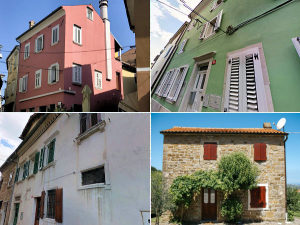  With all the comforts of home, apartments are a great choice for lodging during your trip to Koper. They are often more affordable and can be very comfortable places to stay. But be careful, the rates and quality vary seriously, so always do a good research before you book an apartment! |
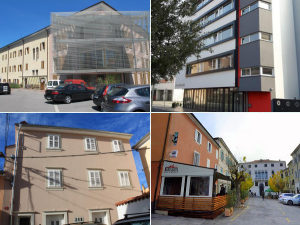  Hostels in Koper are the go-to option for travellers and backpackers who plan to spend very little of their time in their room and most of their time exploring Koper and the Slovenian coast. They’re also a great way to meet other travellers. Unlike a hotel, hostels are more communal in nature and that includes sharing a room with strangers, although often you can get a private room if you want to pay a little more. Find out which hostels in Koper we recommend the most, and why! |
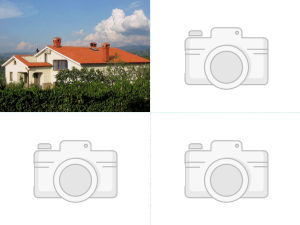  In recent years, farm stays are growing among a number of travelers looking to reconnect with fresh air, local and organic foods, and a more simple and authentic lifestyle on vacation. Farm stays are a form of accommodation on a working farm. Actual accommodations can vary from a room in a farm house, to a cabin or a guest cottage. Typical rates are similar to a bed and breakfast, and like a bed and breakfast, some offer delicious home cooked meals. Some farm stays also allow guests to participate in the daily activities on the farm if they choose. |


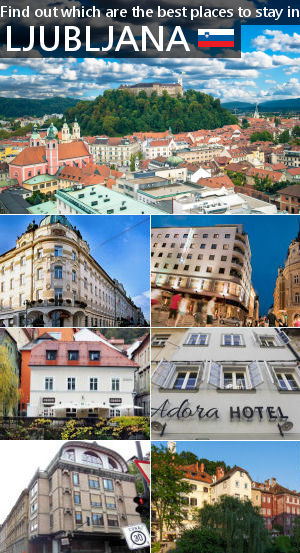
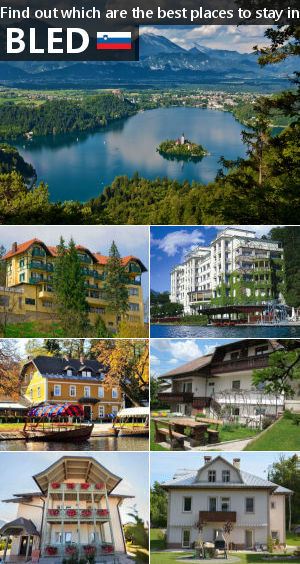
Hi. I just want to correct one information. It’s about the paining of Benedetto Carpaccio. The one that you took photo is not Benedetto’s. His painting is above the one you took photo. The one that is shown here is just a copy of a painting (the original is in Sveta Gora, another Slovenian city). Best regards, and have a nice day.